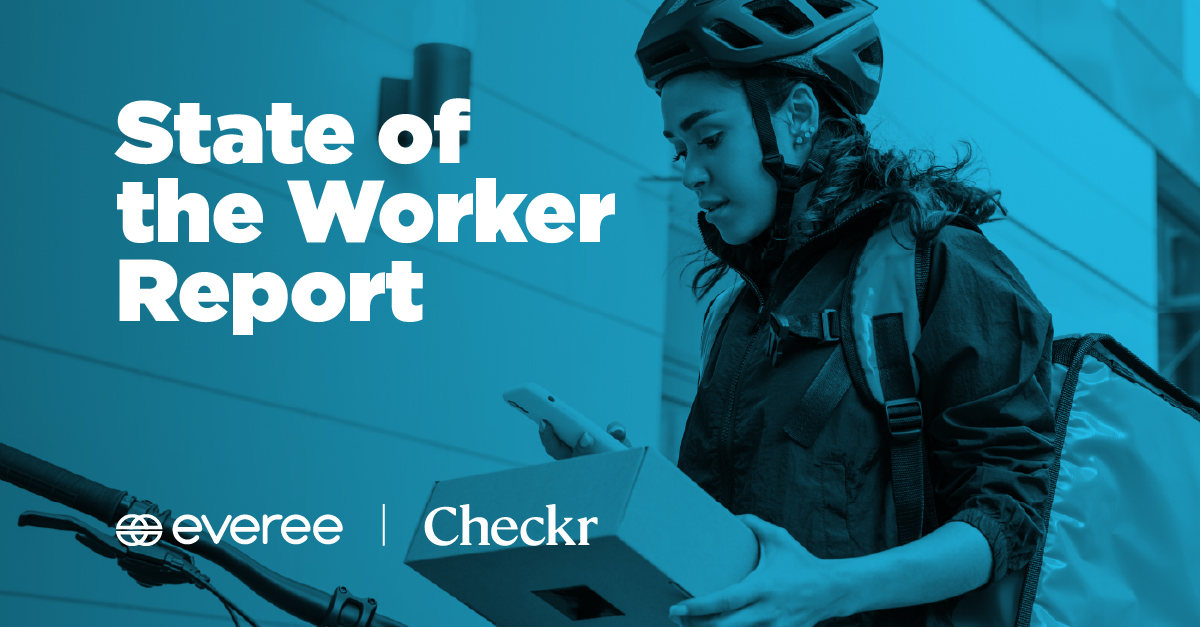The State of
the Worker Report
Today, organizations face a slew of serious challenges — like rising inflation, the demand for higher wages and profound labor shortages — all of which snarl economic recovery.
In large part, these problems are rooted in the COVID-19 pandemic, which fundamentally altered the state of work in the United States.
The good news is that — by taking a proactive approach and understanding more about workers’ overall financial well-being — organizations can overcome these challenges and put themselves in a position to win. This begins by knowing what workers want and need. Everee and Checkr recently surveyed 1,060 U.S. workers on that topic. (Get the full report here.) Here’s what we found:
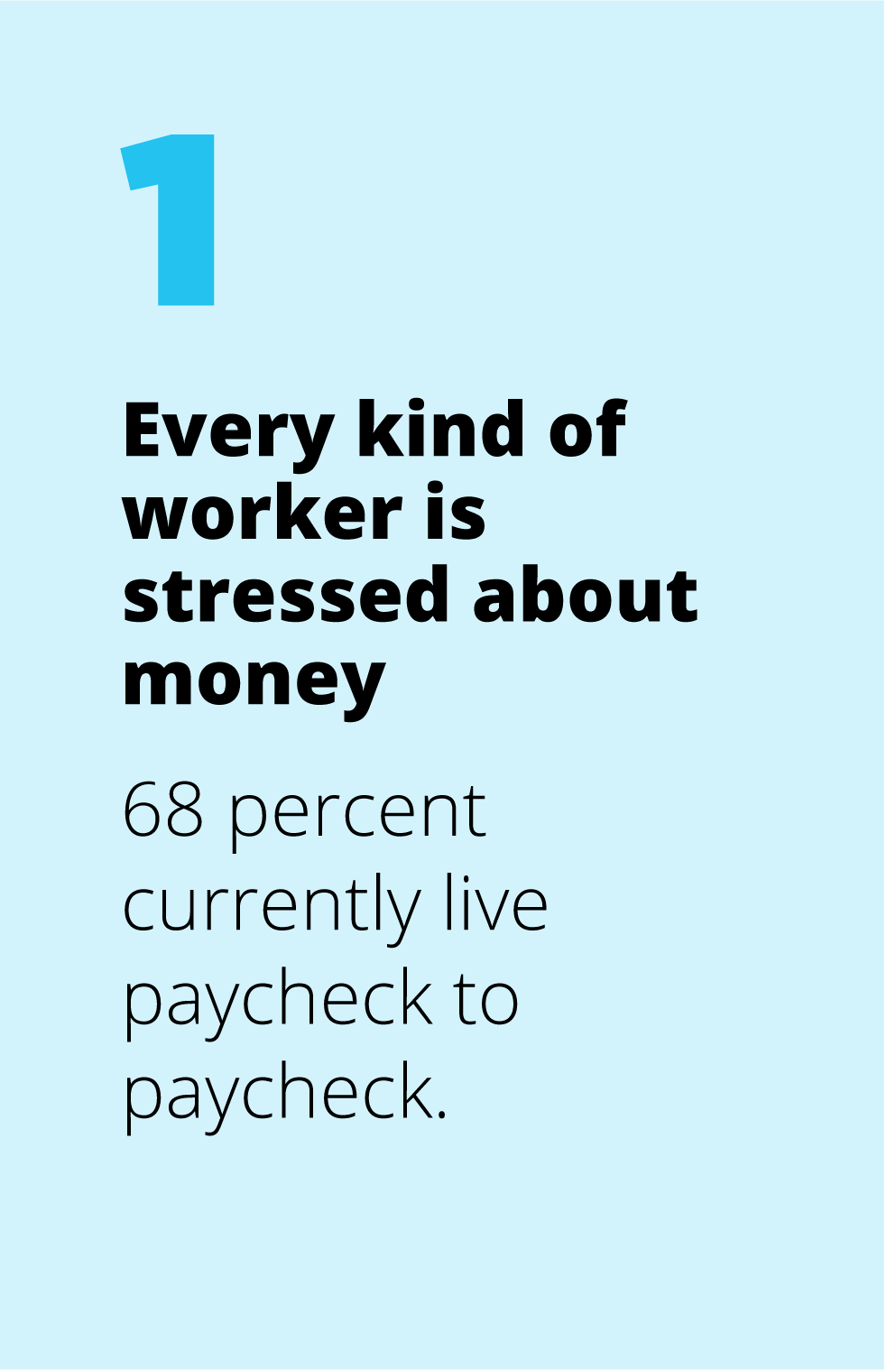
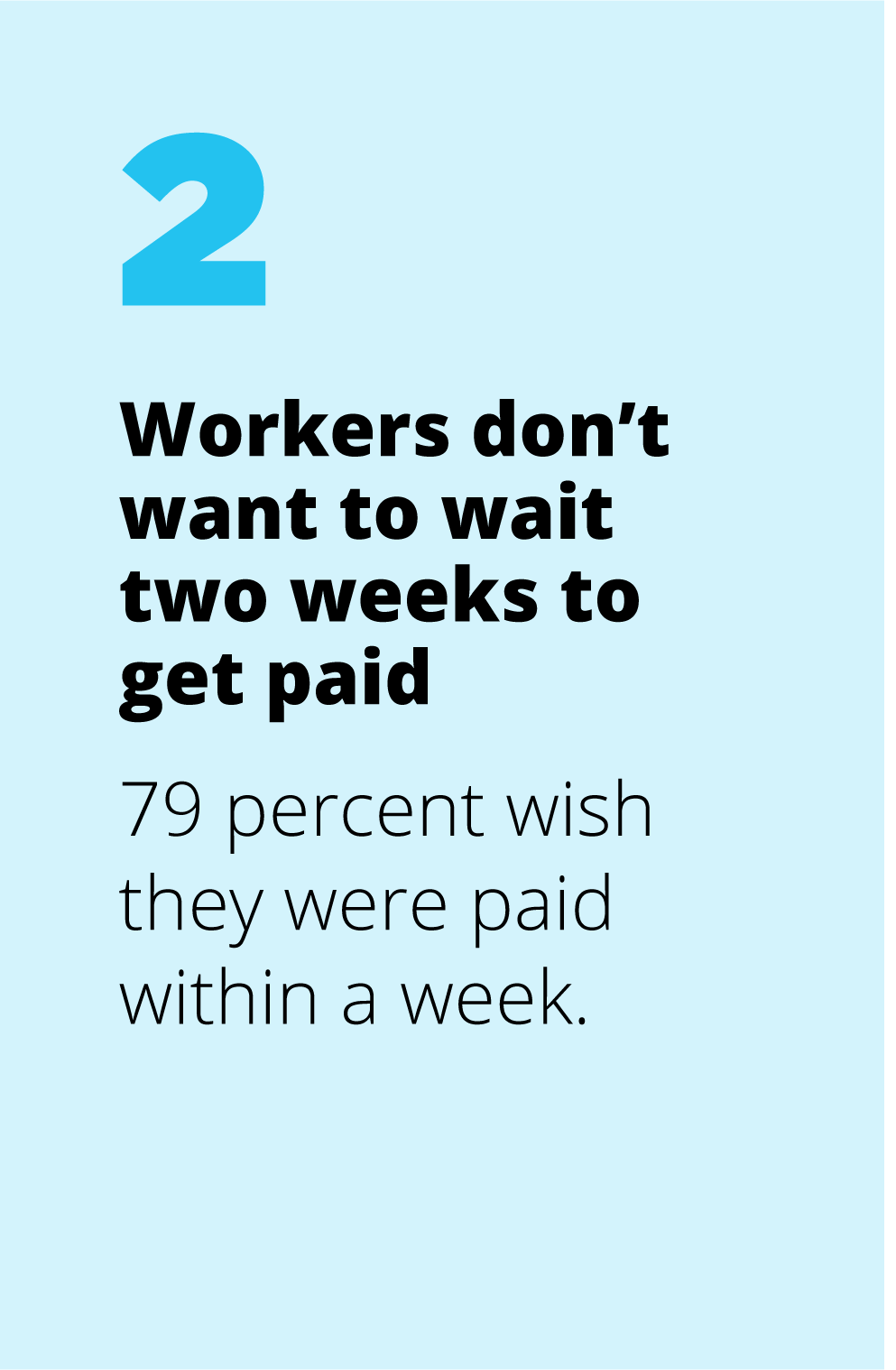
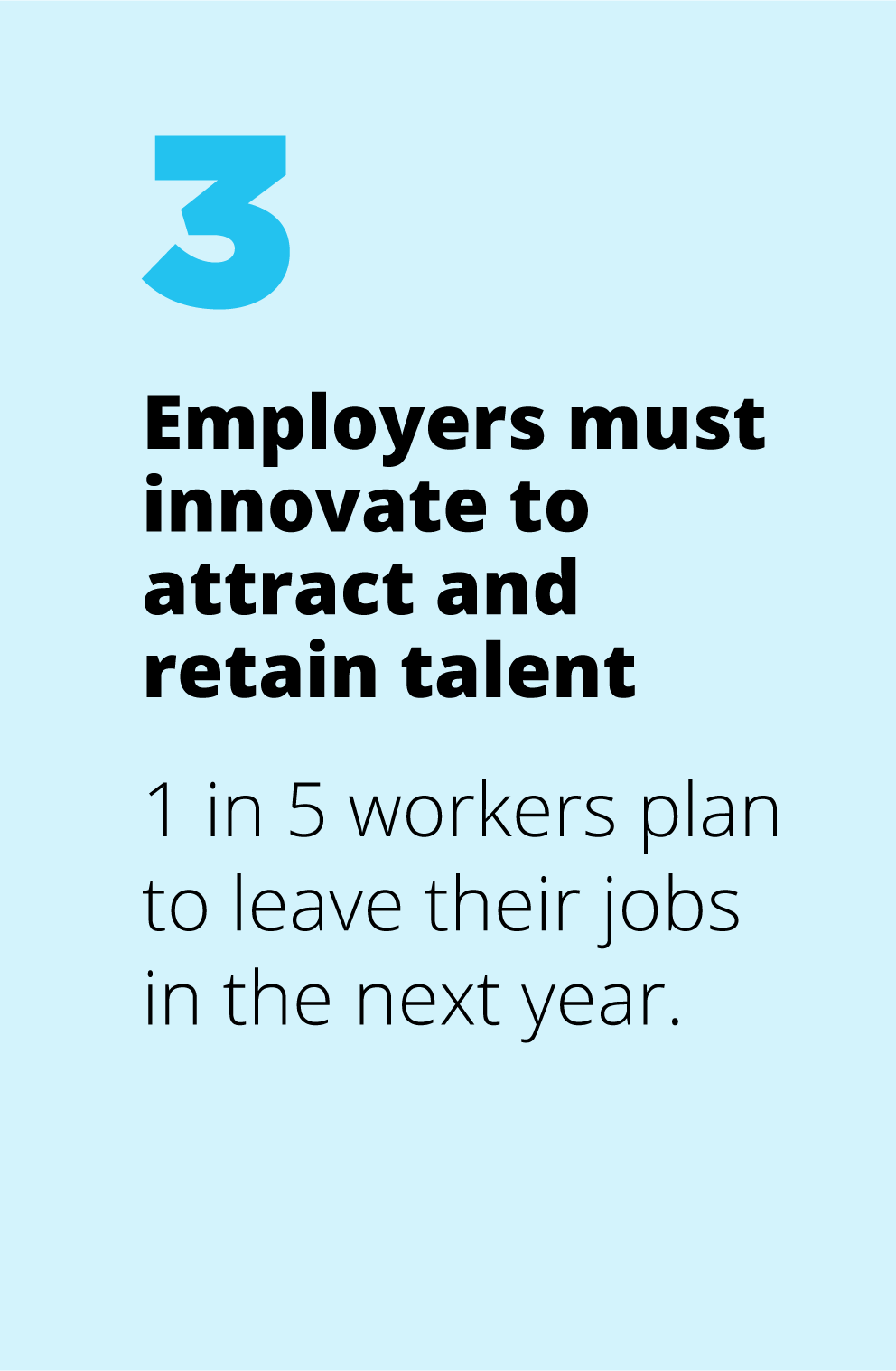
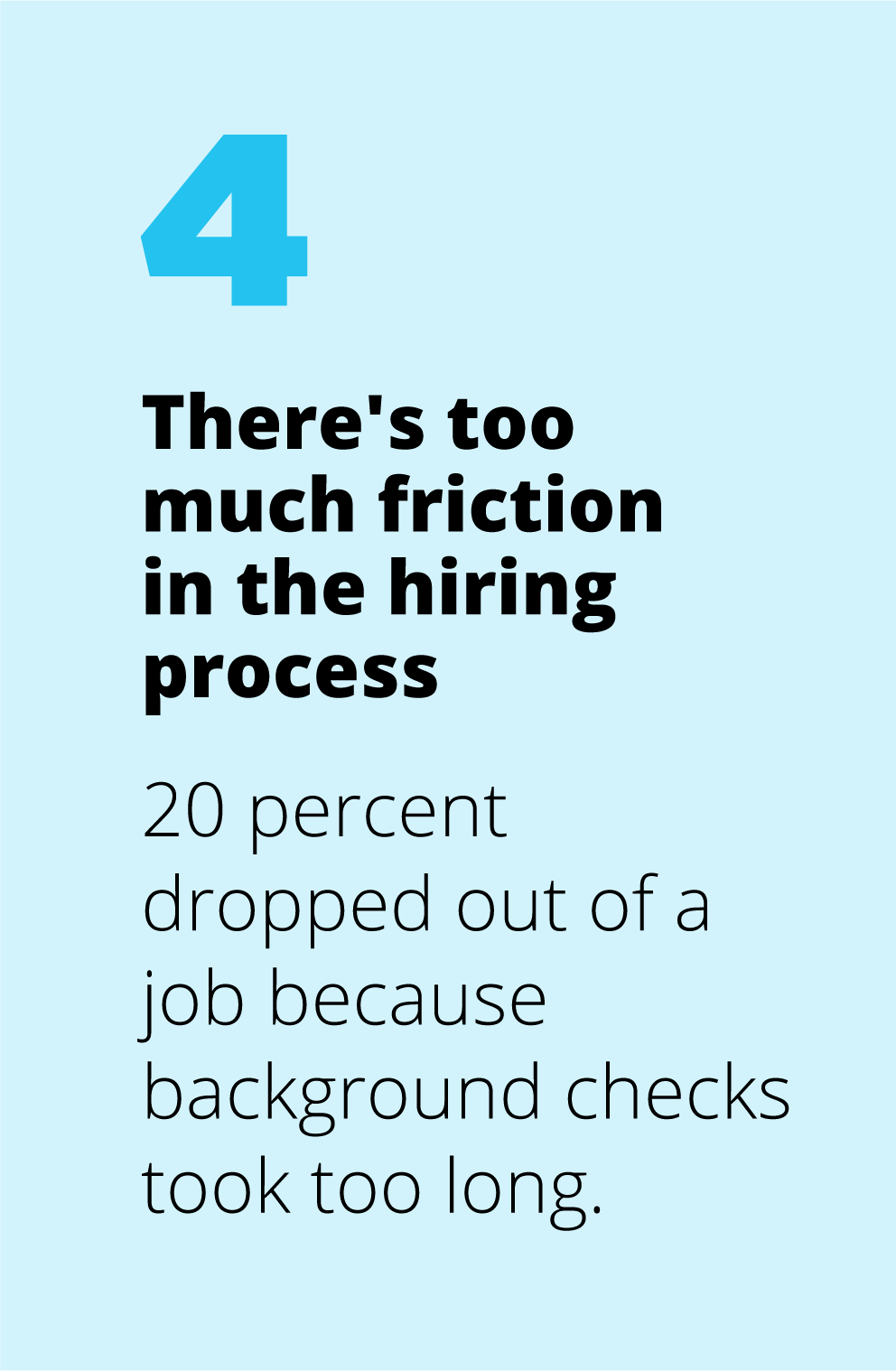
1.Every kind of worker is
stressed about money
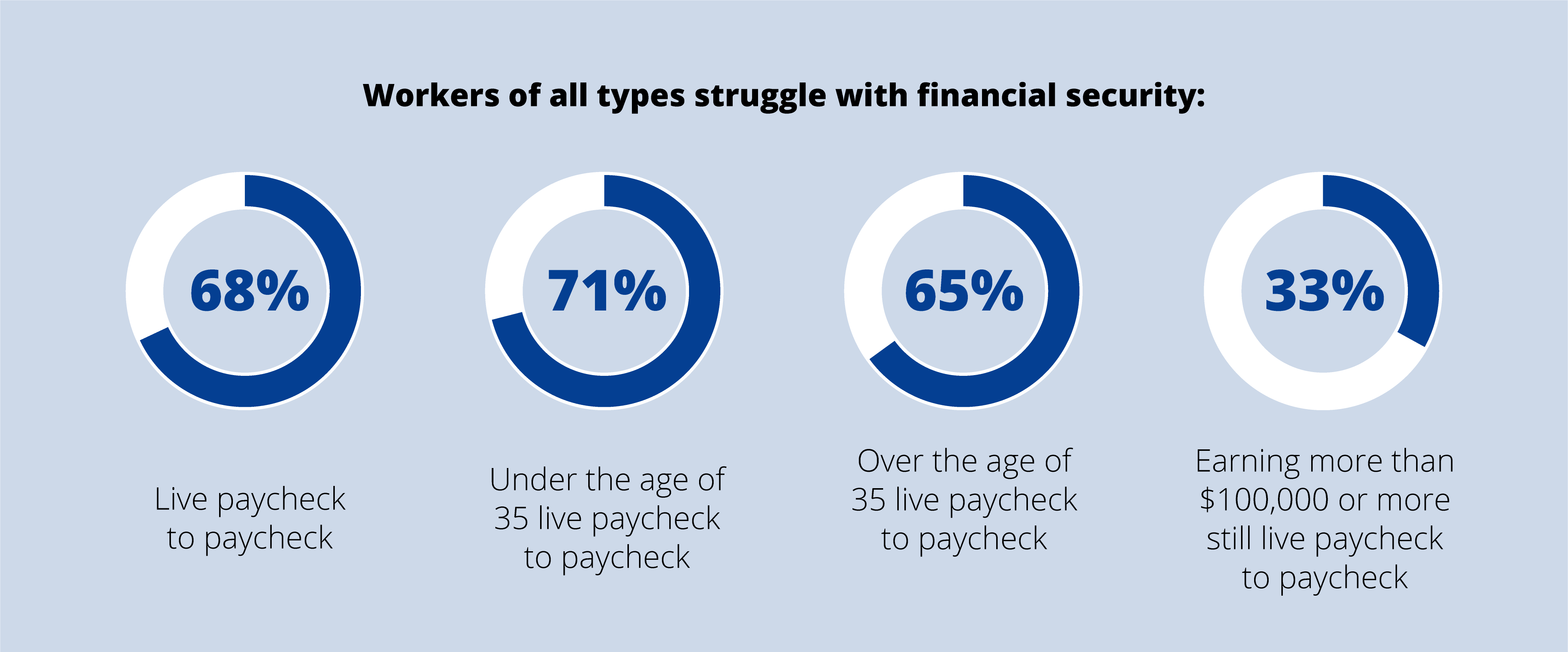
All workers — whether they’re part-time or full-time, W-2 or 1099 — are stressed about their financial situation, that said, gig workers and contrators are slightly more stressed than their W-2 counterparts (70 percent vs. 62 percent).
ONE-THIRD OF WORKERS HAVE MISSED WORK DUE TO FINANCIAL PROBLEMS
Financial problems tend to compound. One out of every three workers have experienced a financial crisis that has forced them to miss work.
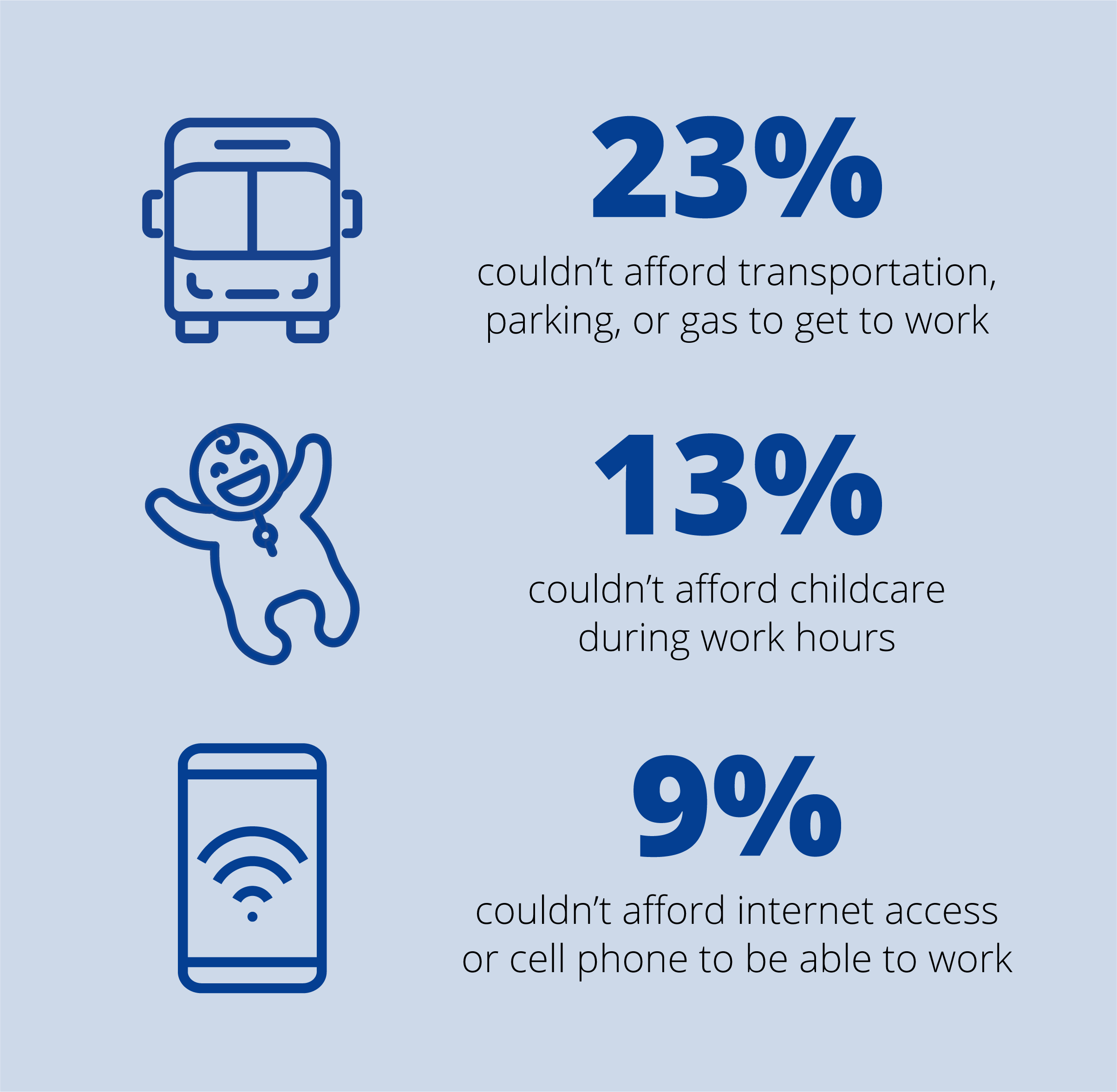
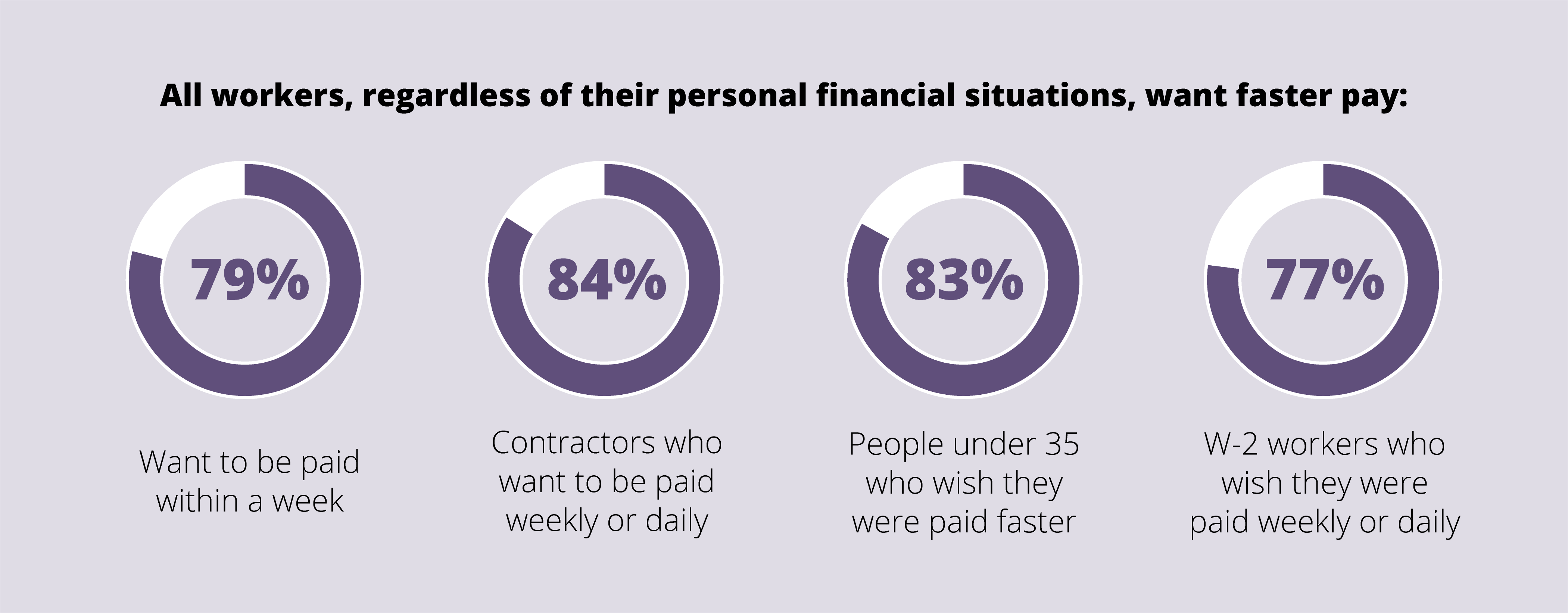
Though they’re still common, slow paydays are so counterintuitive that 72 percent of workers don’t even know why the two-week pay cycle exists.
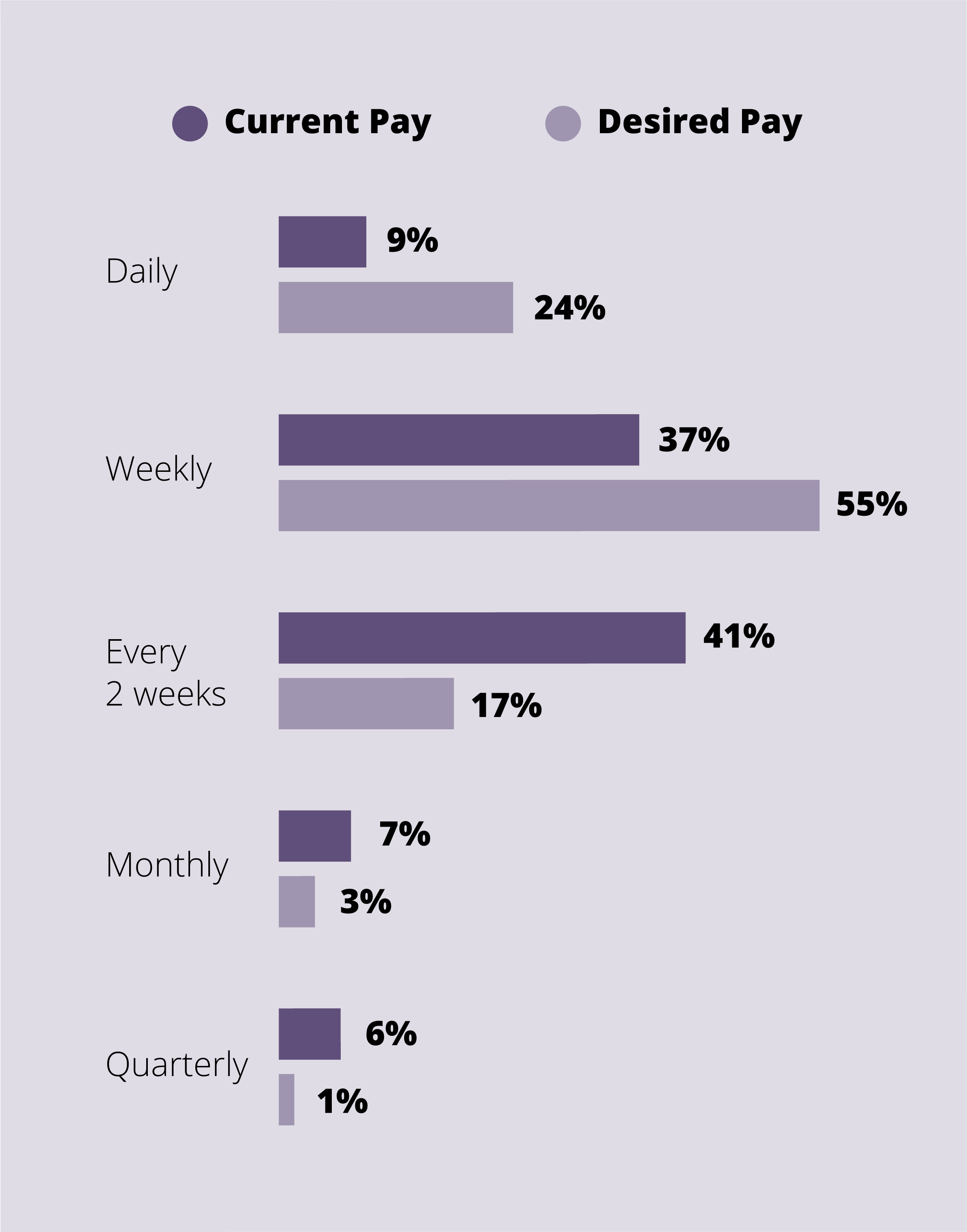
TWO-THIRDS OF WORKERS HAVE TO WAIT TWO WEEKS OR MORE TO GET PAID
The standard two-week pay cycle is particularly problematic as inflation makes it harder for people to stretch their earnings that long to cover cost of living
Contractors, in particular, are keen on speeding up payments, with 84 percent of them indicating they want to be paid weekly or daily, and 40 percent indicating they want to be paid every day. Though their checks are more predictable, W-2 workers are largely tired of biweekly pay cycles as well.
3.Employers must innovate to
attract and retain talent
A number of factors turn prospective workers off from a potential employer and prevent them from applying for open roles in the first place. Here are some of the top reasons candidates disqualify employers from their job searches:

Just because you might not be able to offer 1099 and part-time workers health insurance doesn’t mean you can’t offer other benefits – like faster pay, professional development and career advancement opportunities, and and accelerated hiring process with streamlined background checks
1 IN 5 WORKERS PLAN TO STAY AT THEIR CURRENT JOBS FOR LESS THAN A YEAR
While all types of workers are thinking about their next job opportunity, certain groups are more likely to be on their way out. For example, 28 percent of workers under 35 plan to leave their job within a year while 15 percent of those over 35 share that sentiment. Further, part-time workers are nearly twice as likely to leave their jobs within a year than full-time workers.
The bottom line? If your organization relies on younger, part-time staff, there could be a lot of turnover in your future.
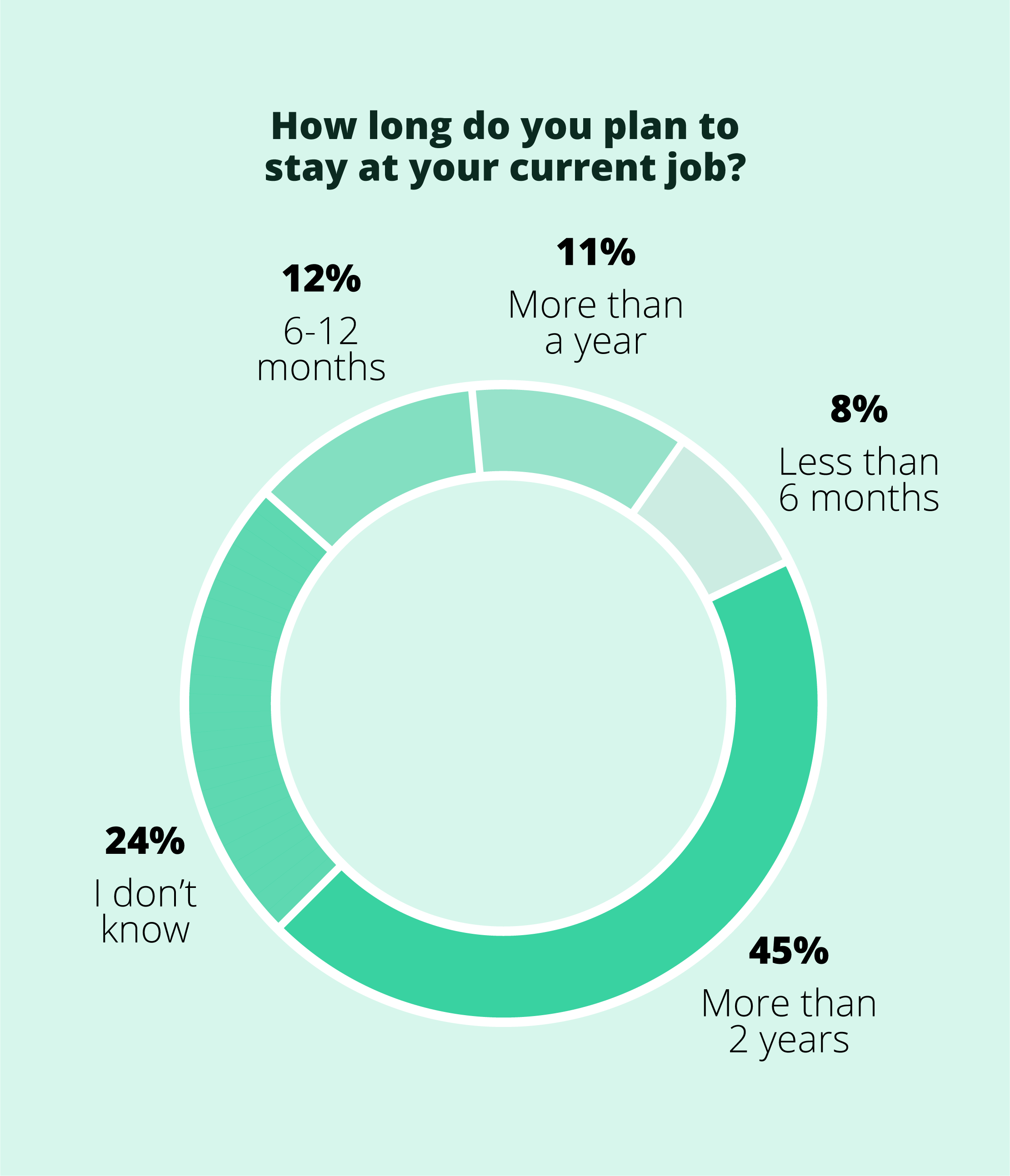
4.There’s too much friction in
the hiring process
Though designed to keep out bad actors, background checks often prevent organizations from giving qualified, system-impacted candidates opportunities. Workers report that the traditional background check process:
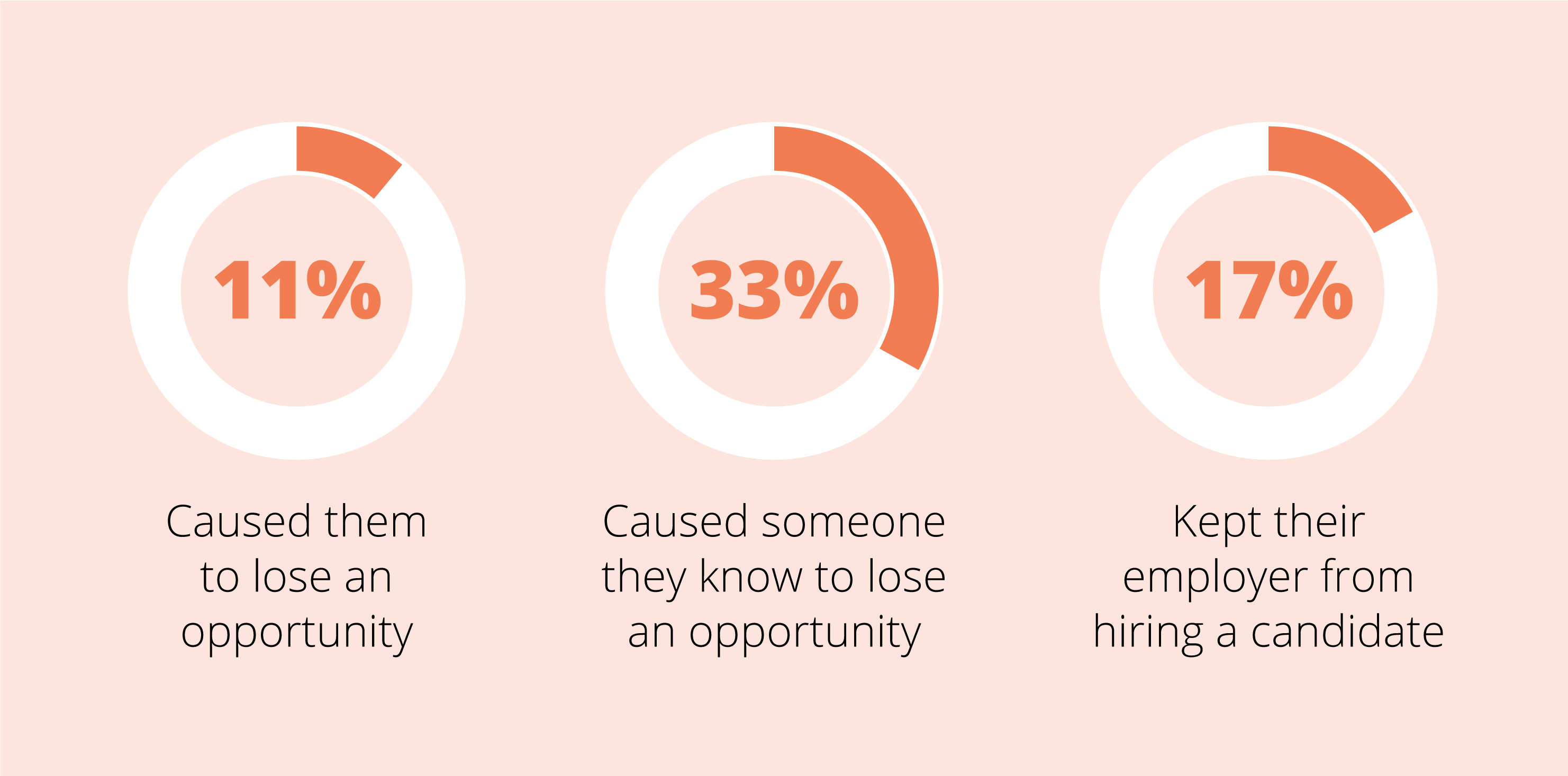
In total, nearly half (48 percent) of workers have either lost an opportunity, know someone who has, or worked for an employer that didn’t offer someone a job because of a criminal record.
20% OF WORKERS STOPPED PURSUING A JOB BECAUSE THE BACKGROUND CHECK PROCESS TOOK TOO LONG
Without the proper technology, traditional background checks are time-consuming, causing employers to lose out on candidates at a critical time.
Using better, mobile solutions can accelerate the process and connect workers and employers in a way that allows for two-way communication. Wider hiring funnels that include workers with criminal records, doesn’t just impact diversity — it helps to combat labor shortages.
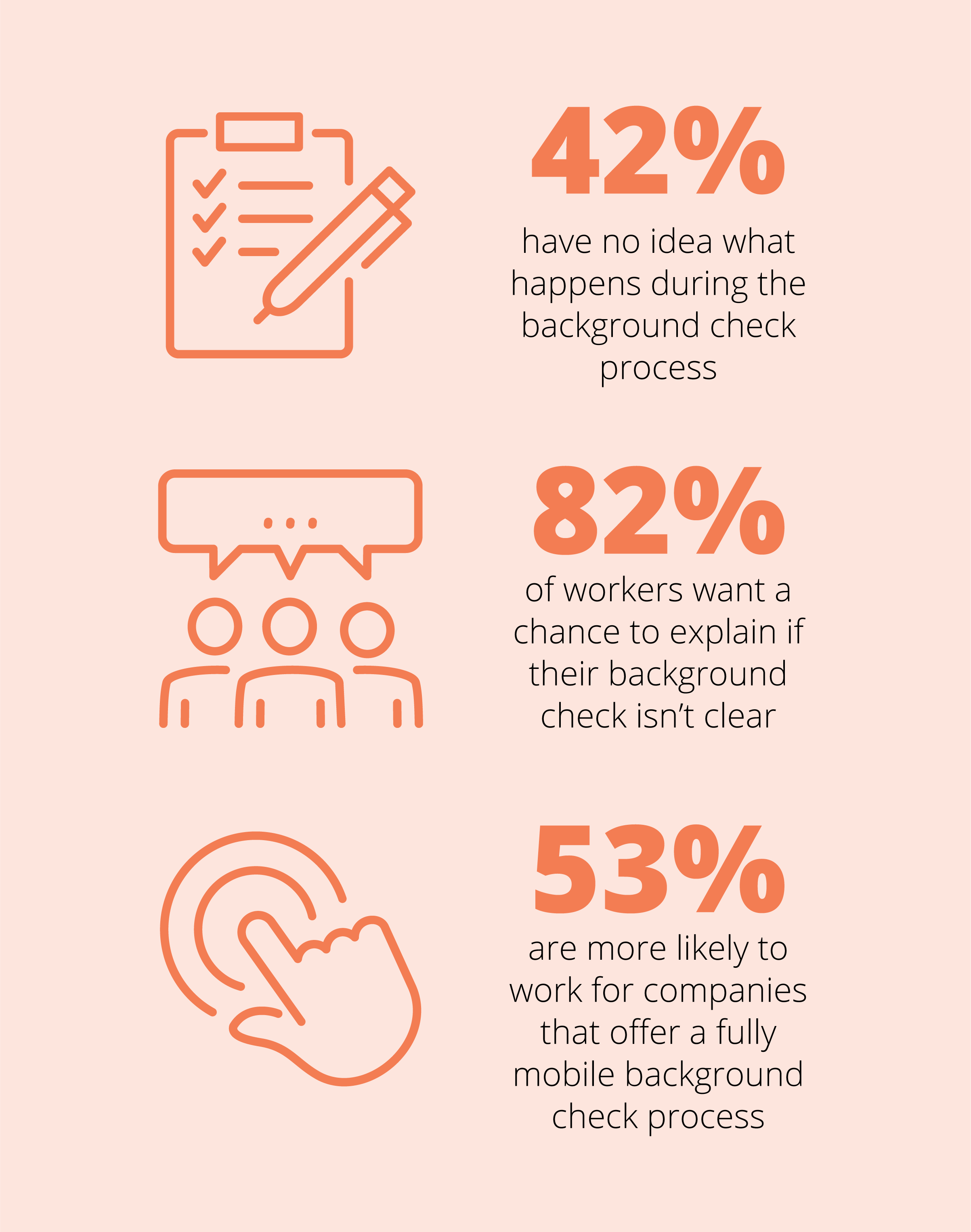
Overcome labor shortages with
faster pay and technology-driven
hiring processes
In today’s difficult business climate, organizations need to do everything within their power to meet worker expectations to overcome labor shortages and win the war for talent.
By ensuring your company can pay workers faster and offer an accelerated, frictionless hiring process, you increase the chances that qualified workers join your ranks — all while building a more diverse, inclusive, and equitable workforce.
For more information on the current employment landscape, download the State of the Worker Report.
